In figure m1=5kg,m2=2kgandF=1N. Find the acceleration of either block. Describe the motion of m1 if the string breaks but F continues to act.
 Solution in Tamil
Solution in Tamil
From the free body diagram (. ) we have
m1a+F−T=−
→T=m1a+F
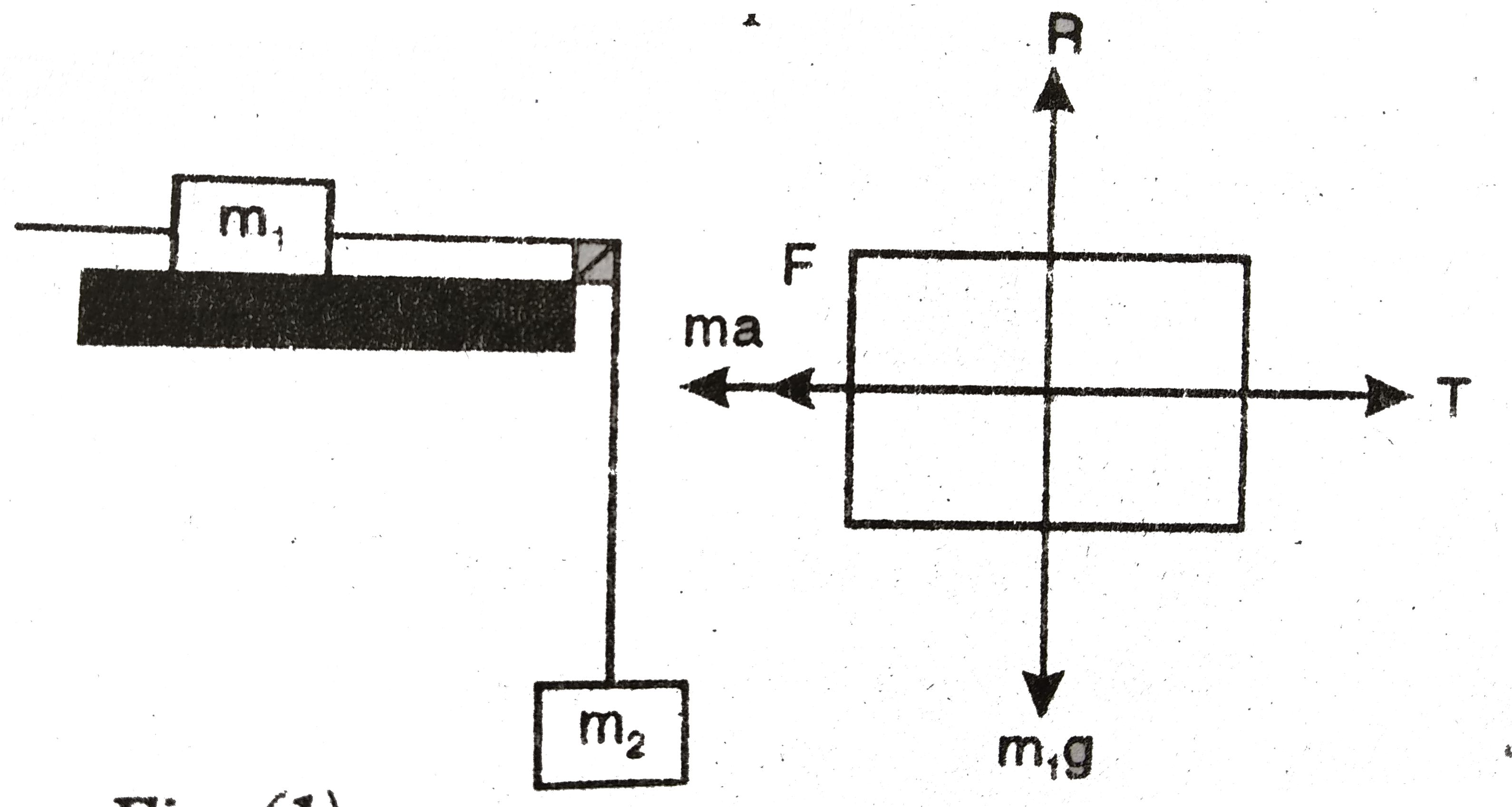
From the free body diagram (. 2)
m2a+T−m2g=0
→m2a+m1+F−m2g=0 (from i.)
→a(m1+m2)+m2g2−m2g=0
[∵F=m2g2]
→a(m1+m2)=m2g2
→Ae≤rationofmass,<br>a= (m_2g)/(2(m_1+m_2)) towards right.
Topper's Solved these Questions
- NEWTON'S LAWS OF MOTIONBOOK - HC VERMACHAPTER - NEWTON'S LAWS OF MOTIONEXERCISE - Objective -2
8 Videos
- LAWS OF THERMODYNAMICSBOOK - HC VERMACHAPTER - LAWS OF THERMODYNAMICSEXERCISE - Short Answer
14 Videos
- PHYSICS AND MATHEMATICSBOOK - HC VERMACHAPTER - PHYSICS AND MATHEMATICSEXERCISE - Exercises
34 Videos
Similar Questions
A refrence frame attached to the earth
View SolutionShould the internal energy of a system necessarily increase if heat is added to it?
View SolutionA vector →A makes an angle of 20∘and→B makes an angle of 110∘ with the X-axis. The magnitude of these vectors are 3 m and 4 m respectively.Find the resultant
View SolutionThree blocks of masses m1,m2andm3 are connected as shown in the figure. All the surfaces are frictionless and the string and the pulleys are light. Find the acceleration of m1
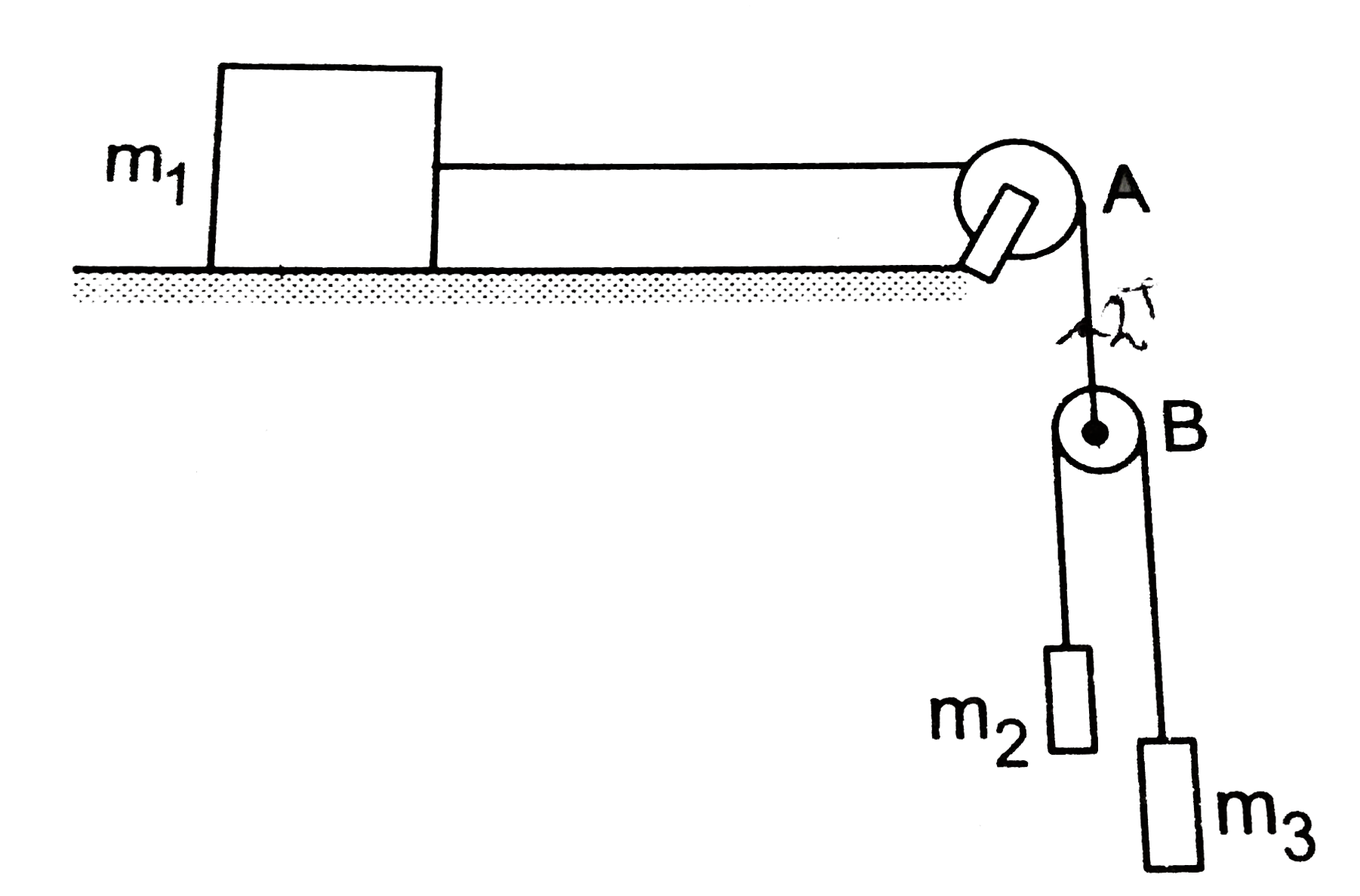
View SolutionA constant force F=m_2g/sisappliedontheblockofmassm_1asshown∈figure.Thestr∈gandthep≤––––yarelightandthesurfaceofthetab≤issm∞th.F∈dtheae≤rationofm_1
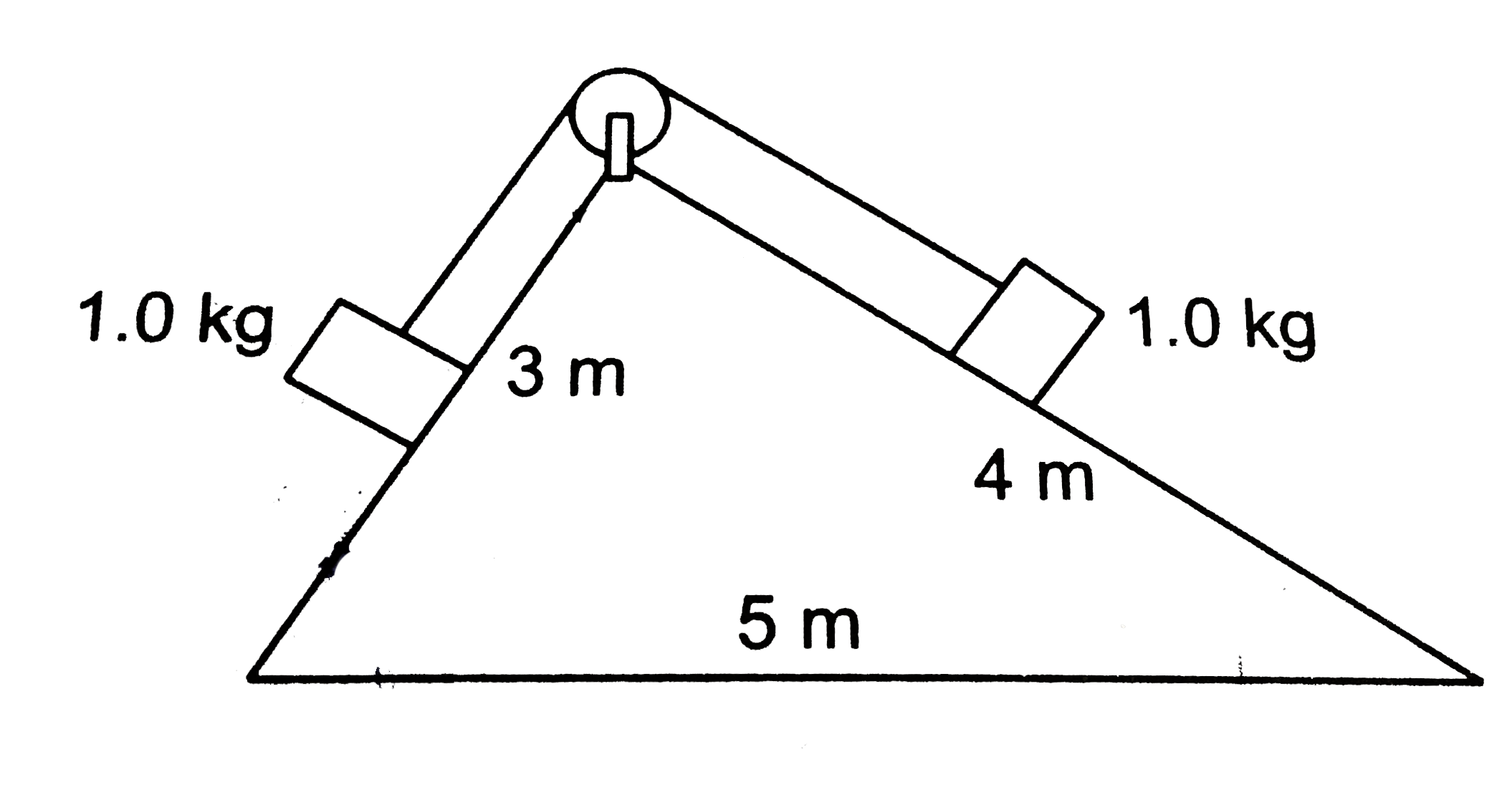
View SolutionLet m1=1kg,m2=2kgandm3=3kg is figure. Find the acceleration of m1,m2andm3. The string from the upper pulley to m1 is 20 cm when the system is realeased from rest. How ong will it take before m1 strikes the pulley?
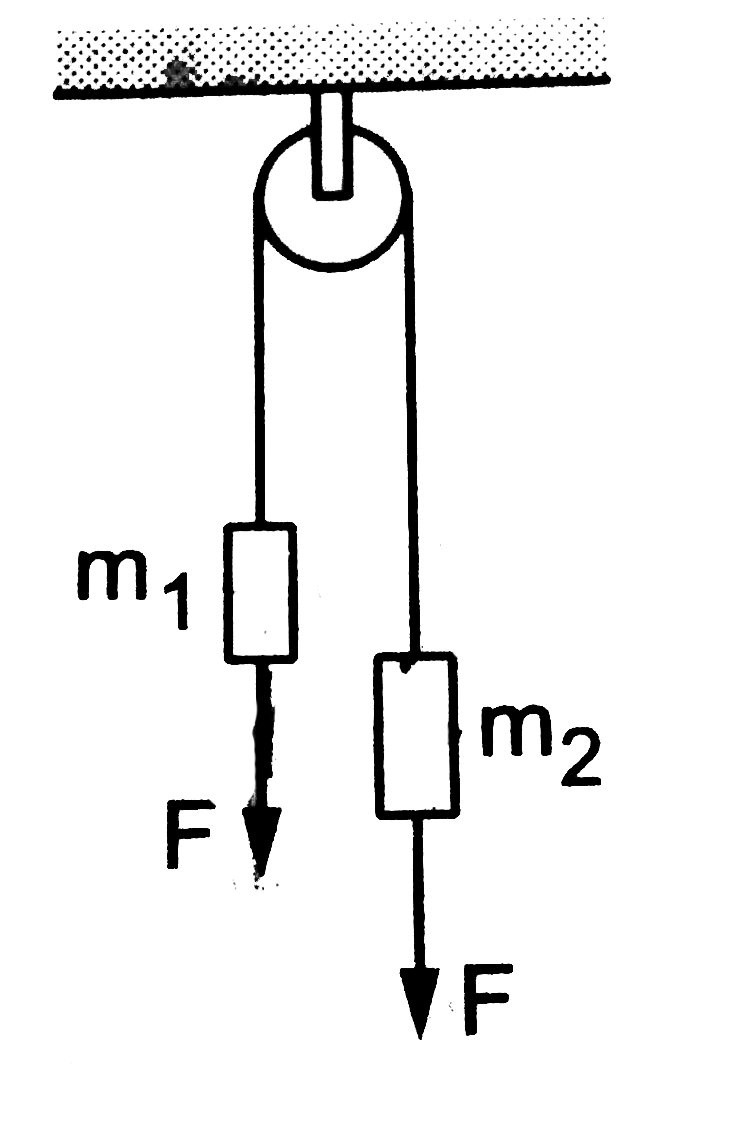
View Solution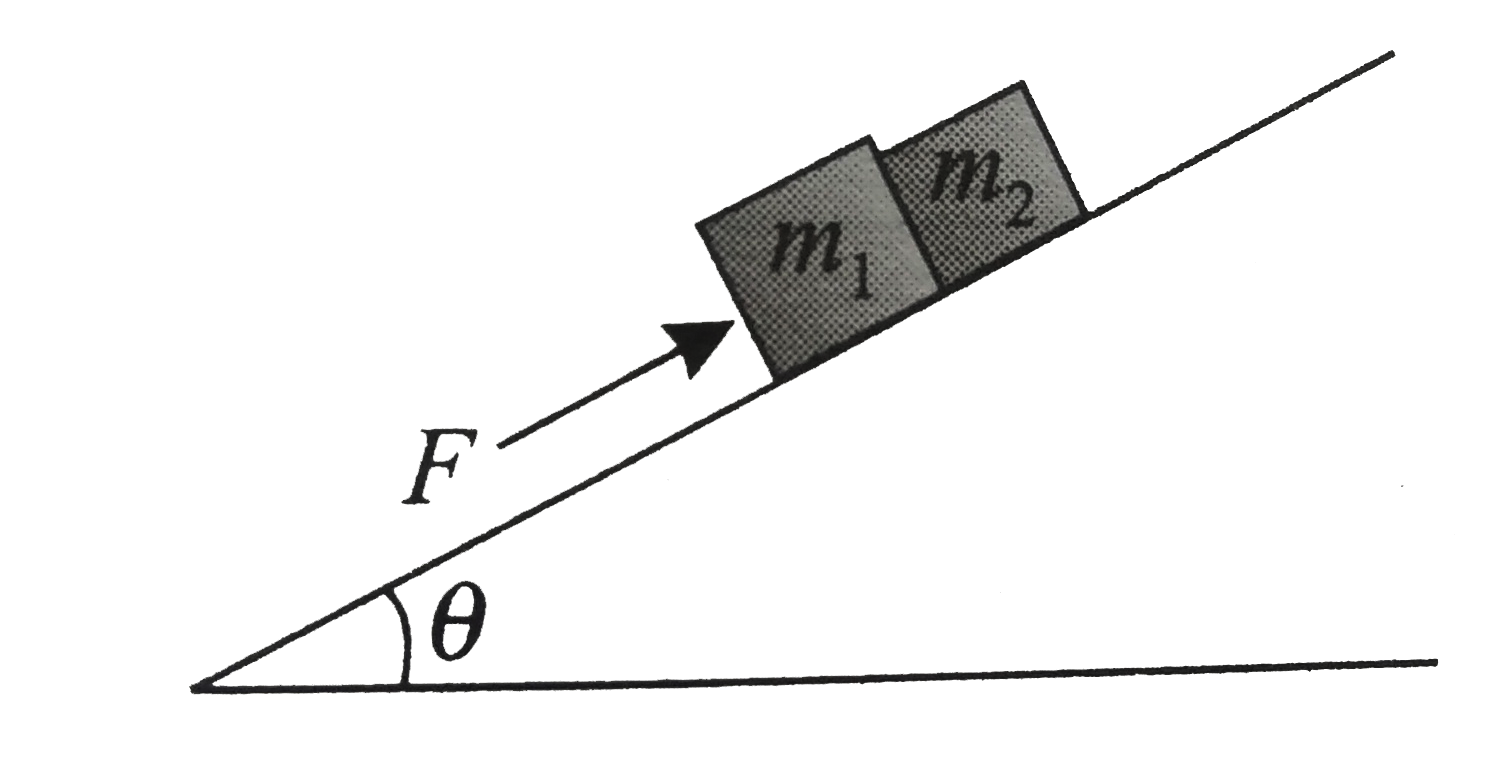
Two blocks are placed at rest on a smooth fixed inclined place. A force F acts on block of mass m1 and is parallel to the inclined plane as shown in figure. Both blocks move up the incline. Then
(i) Draw free body diagram blocks of mass m1 and blocks mass m2
(ii) Find acceleration of blocks of mass m1 and blocks mass m2
(iii) Find normal reaction between the blocks of mass m1 and m2
View SolutionFind the acceleration of centre of mass of the blocks of masses m1,m2(m1>m2) in Atwood's machine.
View SolutionIn the figure, the blocks unequal masses m1 and m2 (m1<m2).m2 has a downward acceleration a. The pulley P has a radius r, and some mass. The string does not slip on the pulley. Find the acceleration of block and angular acceleration of pulley. (I = momentum of inerita of pulley)
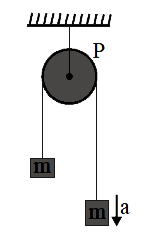
View SolutionTwo blocks of masses m1 and m2(m1>m2) in contact with each other on frictionless, horizontal surface. If a horizontal force F is given onm1 set into motion with acceleration a, then reaction force on mass m1 by m2 is
View SolutionIf two masses m_1 and m_2 (m_1 gt m_2) tied to string moving over a frictionless pulley, then acceleration of masses
View SolutionIf m1=10kg,m2=4kgandm3=2kg the tension in the string connecting m1andm2 is ,
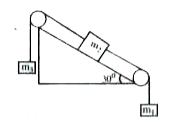
View SolutionIn the arrangement shown in the figure all surfaces are frictionless, the masses of the block are m1=20kgandm2=30kg. The accelerations of masses m1andm2 will be if F = 180N.
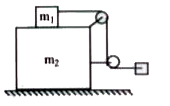
View SolutionThree blocks of masses m1,m2andm3 are connected as shown in the figure. All the surfaces are frictionless and the string and the pulleys are light. Find the acceleration of m1

View Solution
Two blocks are placed at rest on a smooth fixed inclined place. A force F acts on block of mass m1 and is parallel to the inclined plane as shown in figure. Both blocks move up the incline. Then
(i) Draw free body diagram blocks of mass m1 and blocks mass m2
(ii) Find acceleration of blocks of mass m1 and blocks mass m2
(iii) Find normal reaction between the blocks of mass m1 and m2
View Solution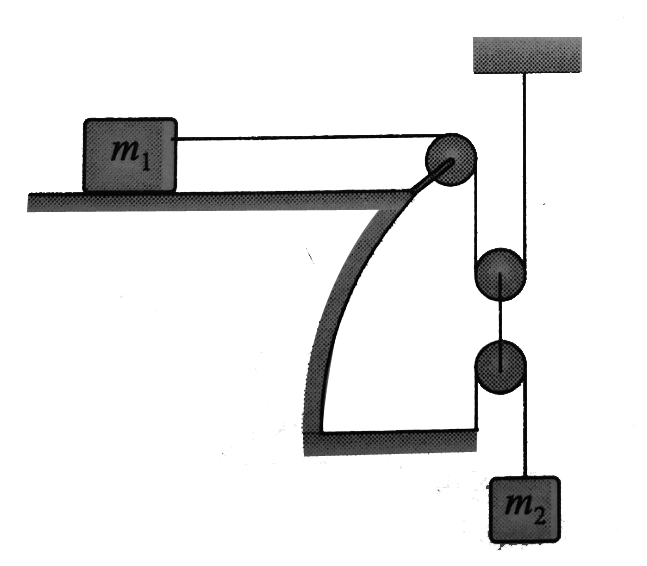
Two blocks of masses m1 and m2 are connected as shown in the figure. The acceleration of the block m2 is :
View Solution